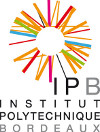| Résumé | Sroka J, Bieniasz-Krzywiec L, Gwóźdź S, Leniowski D, Lącki J, Markowski M, Avignone-Rossa C, Bushell ME, McFadden J, Kierzek AM.
Source
Institute of Informatics University of Warsaw, Poland.
Abstract
BACKGROUND:
Constraint-based approaches facilitate the prediction of cellular metabolic capabilities, based, in turn on predictions of the repertoire of enzymes encoded in the genome. Recently, genome annotations have been used to reconstruct genome scale metabolic reaction networks for numerous species, including Homo sapiens, which allow simulations that provide valuable insights into topics, including predictions of gene essentiality of pathogens, interpretation of genetic polymorphism in metabolic disease syndromes and suggestions for novel approaches to microbial metabolic engineering. These constraint-based simulations are being integrated with the functional genomics portals, an activity that requires efficient implementation of the constraint-based simulations in the web-based environment.
RESULTS:
Here, we present Acorn, an open source (GNU GPL) grid computing system for constraint-based simulations of genome scale metabolic reaction networks within an interactive web environment. The grid-based architecture allows efficient execution of computationally intensive, iterative protocols such as Flux Variability Analysis, which can be readily scaled up as the numbers of models (and users) increase. The web interface uses AJAX, which facilitates efficient model browsing and other search functions, and intuitive implementation of appropriate simulation conditions. Research groups can install Acorn locally and create user accounts. Users can also import models in the familiar SBML format and link reaction formulas to major functional genomics portals of choice. Selected models and simulation results can be shared between different users and made publically available. Users can construct pathway map layouts and import them into the server using a desktop editor integrated within the system. Pathway maps are then used to visualise numerical results within the web environment. To illustrate these features we have deployed Acorn and created a web server allowing constraint based simulations of the genome scale metabolic reaction networks of E. coli, S. cerevisiae and M. tuberculosis.
CONCLUSIONS:
Acorn is a free software package, which can be installed by research groups to create a web based environment for computer simulations of genome scale metabolic reaction networks. It facilitates shared access to models and creation of publicly available constraint based modelling resources.
PMID:
21609434 |


